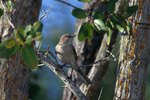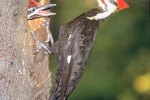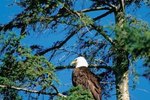
The world is home to more than 200 owl species, most of which are nocturnal predators of insects, birds and mammals. Georgia’s native owls are very beneficial components of the state’s ecosystems, as they help to keep small animal populations in check. Great horned, barred, barn and eastern screech owls inhabit Georgia in all seasons, but bird watchers have also spotted five rare visitors from time to time.
Great Horned Owl
Great horned owls (Bubo virginianus) are imposing predators. The largest owls in the state, great horned owls predate on a wide variety of prey, including other owls, rodents and rabbits. Additionally, great horned owls are one of the few animals that regularly prey on skunks (Mephitis sp.), as they are apparently undeterred by their foul-smelling musk.
Barred Owls
Barred owls (Strix varia) are large owls that normally inhabit coniferous forests near a major water source. Barred owls often roost in dense foliage, but they nest in tree hollows and other cavities. Named for the vertical stripes and bars on their ventral surface, barred owls camouflage well in the forest and can be very hard to spot. Barred owls consume rodents, but they will also eat rabbits, reptiles, insects and small birds.
Eastern Screech Owls
The smallest owls in Georgia, eastern screech owls (Megascops asio) are diminutive birds that reach about 8 inches in height. Unlike many other species, screech owls thrive while living in close proximity to humans. Attracted to the rodents and insects common in the suburbs, screech owls will often nest in nest boxes installed on trees in their range. Aside from the vast size discrepancy, the silhouette of a screech owl is almost identical to that of a great horned owl. Screech owls occur in two color phases: grey and reddish brown. In Georgia, the grey form is most common.
Barn Owls
In contrast to all other native Georgia owls, which are members of the family Strigidae, barn owls (Tyto alba) are members of the family Tytonidae. Rather than the round facial disk common to all strigids, the barn owl has a heart shaped facial disk. Commonly observed prowling open fields, barn owls are not common in deep, primary forests or mountainous regions. Barn owls primarily prey on mice, voles, rats and other small animals.
Transients and Rare Visitors
In addition to the four year-round resident species, several other owl species occasionally wonder through or inhabit Georgia. Long-eared (Asio otus) and short-eared owls (Asio flammeus) occasionally migrate through Georgia; long-eared owls frequent forests, while short-eared owls are grassland birds. Northern saw-whet owls (Aegolius acadicus) occasionally visit Georgia, but snowy owls (Bubo scandiacus) only venture as far as Georgia in rare circumstances. Burrowing owls (Athene cunicularia) only rarely stray into Georgia from their year-round Florida homeland.
References
- Georgia Ornithological Society: 2012 Checklist of Georgia Birds
- Georgia Outdoors: Wild Fact: Head-Turning Owls
- Fernbank Science Center: Barn Owl
- Georgia Department of Natural Resources: Georgia's Screech Owls
- Cornell Lab of Ornithology: Great Horned Owls
- Fernbank Science Center: Barred Owl
- Animal Diversity Web: Stigiformes
- Cornell Lab of Ornithology: Short-Eared Owl
- Cornell Lab of Ornithology: Burrowing Owl
- Cornell Lab of Ornithology: Snowy Owl
Photo Credits
-
Jupiterimages/Photos.com/Getty Images




